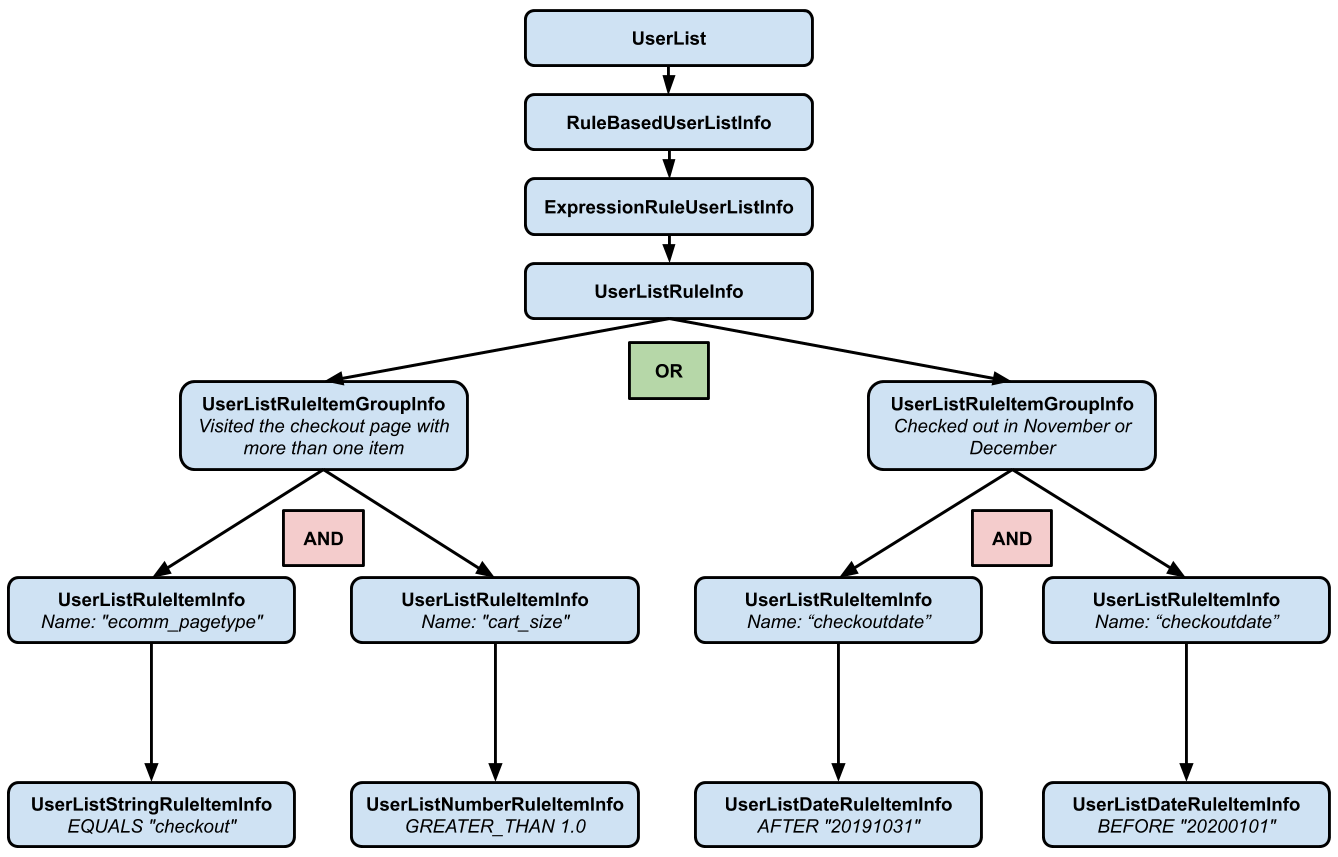Giả sử bạn có một trang web mà bạn đã định cấu hình một số thông số thẻ tái tiếp thị tuỳ chỉnh để thu thập các thuộc tính sau đây của người dùng:
event– Danh mục trang trên trang web của bạn, chẳng hạn như thanh toán, giỏ hàng, v.v.cartsize– Số lượng mặt hàng trong giỏ hàng của người dùng.checkoutdate– Ngày người dùng trả phòng. Bạn chỉ đặt thông số này khi người dùng thực sự hoàn tất giao dịch mua.
Bạn muốn hiển thị nhiều lượt hiển thị hơn cho những người dùng đã đặt nhiều mặt hàng vào giỏ hàng và bắt đầu quy trình thanh toán. Bạn cũng muốn tìm những người dùng đã mua hàng trong tháng 11 và tháng 12 vì bạn dự định tổ chức một đợt giảm giá lớn trên trang web của mình trong những tháng đó.
Bạn có thể mô tả nhóm người dùng này bằng một trong hai quy tắc sau:
- Người dùng đã truy cập vào trang thanh toán và có nhiều mặt hàng trong giỏ hàng.
- Những người dùng đã thanh toán trong tháng 11 hoặc tháng 12.
Nếu người dùng thuộc danh mục 1 hoặc danh mục 2, bạn muốn tăng giá thầu trong các nhóm quảng cáo hoặc chiến dịch cụ thể lên 25%.
Đối tượng
Hãy xem cấu trúc của danh sách người dùng dựa trên quy tắc. Danh sách dựa trên quy tắc được biểu thị trong Google Ads API dưới dạng rule_based_user_list.
Sơ đồ sau đây cho thấy giao diện của rule_based_user_list cho trường hợp sử dụng này khi chúng ta hoàn tất.


